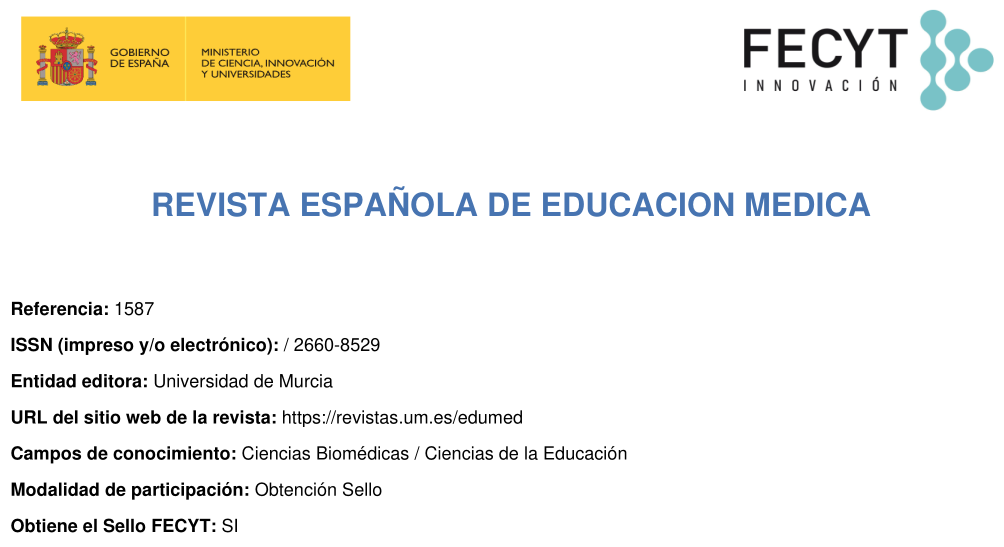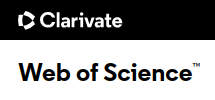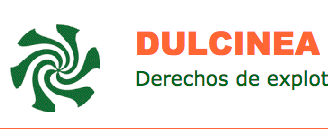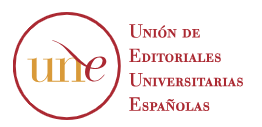El “residente como docente”: estudio fenomenográfico sobre las experiencias docentes en residentes de Medicina Familiar de una Universidad en Chía, Colombia
Resumen
Los residentes médicos representan un rol fundamental en el proceso de formación de estudiantes, internos y co-residentes, con labores implícitas de docencia en sus obligaciones como estudiantes de posgrado y sin ningún tipo de formación para ello. Previo a la implementación de programas de “residente como docente”, resulta útil indagar sobre las experiencias docentes en contexto, para así desarrollar programas acordes a las características y necesidades del medio. Este estudio buscó identificar las variaciones en las experiencias docentes de residentes de Medicina Familiar de una Universidad en Colombia. Corresponde a una investigación cualitativa con un enfoque fenomenográfico. Participaron 15 residentes de diferentes años de formación. Se identificaron 5 categorías de descripción relacionadas de manera jerárquica y determinadas a partir de 7 dimensiones de variación. Las formas identificadas de experimentar el rol del “residente como docente” son el transmisor pasivo impuesto, el facilitador del conocimiento, el facilitador de la práctica clínica, el role model y el “lifelong learner”. Las variaciones en las experiencias del “residente como docente”, estuvieron determinadas por la interacción de factores personales y contextuales. Se identificó que las categorías de descripción se encuentran interconectadas, con el potencial de avanzar hacia la siguiente categoría. Lo anterior puede ser utilizado como sustrato para el desarrollo de un programa de “residente como docente” orientado a potenciar la transformación hacia las categorías de descripción en los niveles de mayor comprensión del rol, situación deseable en el contexto latinoamericano donde los residentes tienen diversas responsabilidades docentes.
Descargas
Métricas
-
Resumen532
-
pdf439
Citas
Ramani, S., Mann, K., Taylor, D., & Thampy, H. (2016). Residents as teachers: Near peer learning in clinical work settings: AMEE Guide No. 106. Medical teacher, 38(7), 642–655. https://doi.org/10.3109/0142159X.2016.1147540
Bayter, E., Cordoba, A., & Messier, J. (2017). Residentes como docentes en la Fundación Universitaria de Ciencias de la Salud (FUCS), proyecto de residentes formadores. Repertorio de Medicina y Cirugía, 26(1), 27–34. https://doi.org/10.1016/j.reper.2017.03.001
Hill, A. G., Yu, T. C., Barrow, M., & Hattie, J. (2009). A systematic review of resident-as-teacher programmes. Medical education, 43(12), 1129–1140. https://doi.org/10.1111/j.1365-2923.2009.03523.x
Ince-Cushman, D., Rudkin, T., & Rosenberg, E. (2015). Supervised near-peer clinical teaching in the ambulatory clinic: an exploratory study of family medicine residents' perspectives. Perspectives on medical education, 4(1), 8–13. https://doi.org/10.1007/s40037-015-0158-z
Zundel, S., Stocker, M., & Szavay, P. (2017). "Resident as teacher" in pediatric surgery: Innovation is overdue in Central Europe. Journal of pediatric surgery, 52(11), 1859–1865. https://doi.org/10.1016/j.jpedsurg.2017.05.029
Isenberg-Grzeda, E., Weiss, A., Blackmore, M. A., Shen, M. J., Abrams, M. S., & Woesner, M. E. (2016). A Survey of American and Canadian Psychiatry Residents on Their Training, Teaching Practices, and Attitudes Toward Teaching. Academic Psychiatry, 40(5), 812-815. https://doi.org/10.1007/s40596-016-0491-5
Mann, K. V., Sutton, E., & Frank, B. (2007). Twelve tips for preparing residents as teachers. Medical teacher, 29(4), 301–306. https://doi.org/10.1080/01421590701477431
Nawabi, S., Shaikh, S. S., Javed, M. Q., & Riaz, A. (2020). Faculty's Perception of Their Role as a Medical Teacher at Qassim University, Saudi Arabia. Cureus, 12(7), e9095. https://doi.org/10.7759/cureus.9095
Harden, R. M., & Crosby, J. (2000). AMEE guide no 20: The good teacher is more than a lecturer - The twelve roles of the teacher. Medical Teacher, 22(4), 334–347. https://doi.org/10.1080/014215900409429
Devine, L. A., Ginsburg, S., Stenfors, T., Cil, T. D., McDonald-Blumer, H., Walsh, C. M., & Stroud, L. (2019). Professional Responsibilities and Personal Impacts: Residents' Experiences as Participants in Education Research. Academic medicine : journal of the Association of American Medical Colleges, 94(1), 115–121. https://doi.org/10.1097/ACM.0000000000002411
Hubinette, M. M., Ajjawi, R., & Dharamsi, S. (2014). Family physician preceptors' conceptualizations of health advocacy: implications for medical education. Academic medicine : journal of the Association of American Medical Colleges, 89(11), 1502–1509. https://doi.org/10.1097/ACM.0000000000000479
Limberg, L. (2012). Phenomenography. In The SAGE Encyclopedia of Qualitative Research Methods (pp. 612–614). https://doi.org/https://dx.doi.org/10.4135/9781412963909
Larsson, J., & Holmstrom, I. (2007). Phenomenographic or phenomenological analysis: does it matter? Examples from a study on anaesthesiologists’ work. International Journal of Qualitative Studies on Health and Well-Being, 46(October 2006). https://doi.org/10.1080/17482620601068105
Röing, M., Holmström, I. K., & Larsson, J. (2018). A Metasynthesis of Phenomenographic Articles on Understandings of Work Among Healthcare Professionals. Qualitative health research, 28(2), 273–291. https://doi.org/10.1177/1049732317719433
Stenfors-Hayes, T., Hult, H., & Dahlgren, L. O. (2012). Three ways of understanding development as a teacher. European journal of dental education : official journal of the Association for Dental Education in Europe, 16(1), e151–e157. https://doi.org/10.1111/j.1600-0579.2011.00690.x
Stenfors-Hayes, T., Hult, H., & Dahlgren, M. A. (2013). A phenomenographic approach to research in medical education. Medical education, 47(3), 261–270. https://doi.org/10.1111/medu.12101
Emanuel E. ¿Que hace que la investigacion clinica sea etica? siete requisitos éticos. In: Investigación en sujetos humanos: experiencia internacional Santiago de Chile: Programa Regional de Bioética OPS/OMS [Internet]. 1999. p. 33–46. Available from: http://www.uss.cl/wp-content/uploads/2014/12/10.-REQUISITOS-ETICOS-EN-INVESTIGACIÓN.pdf%0Ahttps://www.bioeticacs.org/iceb/seleccion_temas/investigacionEnsayosClinicos/Emanuel_Siete_Requisitos_Eticos.pdf
Gerlese S. Åkerlind (2005) Variation and commonality in phenomenographic research methods, Higher Education Research & Development, 24:4, 321-334, http://dx.doi.org/10.1080/07294360.2011.642845
Jacobs, J. C. G., van Luijk, S. J., Galindo-Garre, F., Muijtjens, A. M. M., van der Vleuten, C. P. M., Croiset, G., & Scheele, F. (2014). Five teacher profiles in student-centred curricula based on their conceptions of learning and teaching. BMC Medical Education, 14(1), 220. https://doi.org/10.1186/1472-6920-14-220
Jacobs, J. C. G., van Luijk, S. J., Galindo-Garre, F., Muijtjens, A. M. M., van der Vleuten, C. P. M., Croiset, G., & Scheele, F. (2014). Five teacher profiles in student-centred curricula based on their conceptions of learning and teaching. BMC Medical Education, 14(1), 220. https://doi.org/10.1186/1472-6920-14-220
Hossein, K. M., Fatemeh, D., Fatemeh, O. S., Katri, V. J., & Tahereh, B. (2010). Teaching style in clinical nursing education: a qualitative study of Iranian nursing teachers' experiences. Nurse education in practice, 10(1), 8–12. https://doi.org/10.1016/j.nepr.2009.01.016
Cruess, S. R., Cruess, R. L., & Steinert, Y. (2008). Role modelling--making the most of a powerful teaching strategy. BMJ (Clinical research ed.), 336(7646), 718–721. https://doi.org/10.1136/bmj.39503.757847.BE
Coppell, R. (2020). Revisiting the Concept of the Anti-Role-Model for Social Learning Theory in UK Education. Research Ideas and Outcomes, 6. https://doi.org/10.3897/rio.6.e60683
Bandura, A. (1977). Social learning theory. Englewood Cliffs, N.J: Prentice Hall.
Laal, M. (2011). Lifelong learning: What does it mean? Procedia - Social and Behavioral Sciences, 28(May), 470–474. https://doi.org/10.1016/j.sbspro.2011.11.090
Kheong Lum, S., AS Burud, I., Shirahatti, R., & Barua, A. (2019). Students and Faculty Perspective of a Good Medical Teacher in the Asian Context. Journal of Surgery and Research, 2(3), 054–059. https://doi.org/10.26502/jsr.10020019
Stenfors-Hayes, T., Hult, H., & Dahlgren, L. O. (2011). What does it mean to be a good teacher and clinical supervisor in medical education?. Advances in health sciences education : theory and practice, 16(2), 197–210. https://doi.org/10.1007/s10459-010-9255-2
Imafuku, R., Saiki, T., Kawakami, C., & Suzuki, Y. (2015). How do students' perceptions of research and approaches to learning change in undergraduate research?. International journal of medical education, 6, 47–55. https://doi.org/10.5116/ijme.5523.2b9e
Sjöström, B., & Dahlgren, L. O. (2002). Applying phenomenography in nursing research. Journal of advanced nursing, 40(3), 339–345. https://doi.org/10.1046/j.1365-2648.2002.02375.x
Derechos de autor 2021 Servicio de Publicaciones de la Universidad de Murcia

Esta obra está bajo una licencia internacional Creative Commons Atribución-NoComercial-SinDerivadas 4.0.
Las obras que se publican en esta revista están sujetas a los siguientes términos:
1. El Servicio de Publicaciones de la Universidad de Murcia (la editorial) conserva los derechos patrimoniales (copyright) de las obras publicadas y favorece y permite la reutilización de las mismas bajo la licencia de uso indicada en el punto 2.
© Servicio de Publicaciones, Universidad de Murcia
2. Las obras se publican bajo una licencia Creative Commons Reconocimiento-NoComercial-SinObraDerivada 4.0.
![]()
3. Condiciones de auto-archivo. Se permite y se anima a los autores a difundir electrónicamente las versiones preprint (versión antes de ser evaluada y enviada a la revista) y/o post-print (versión evaluada y aceptada para su publicación) de sus obras antes de su publicación, ya que favorece su circulación y difusión más temprana y con ello un posible aumento en su citación y alcance entre la comunidad académica.



















